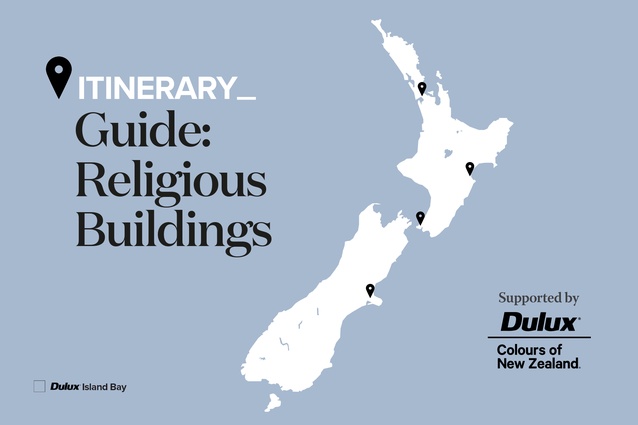Itinerary Guide: Religious Buildings
In this month's Intinerary, supported by Dulux Colours of New Zealand, Andrew Barrie highlights some of New Zealand's most notable religious buildings, acknowledging their plight, their resurrection and adaptation in modern times.
Bill McKay describes churches as providing “gathering spaces at the hearts of communities.” Being intimately linked to key life events such as weddings and funerals, they unsurprisingly can hold profound emotional significance, even for non-churchgoers. For example, many of the loudest voices advocating for the restoration of Christchurch’s quake-damaged Anglican cathedral were from outside the church. For them, the building’s symbolic and civic value outweighed its lack of fit with the contemporary spiritual and social needs of those who actually used it, and whose desire was for a good-fit building at a fraction of the cost of restoration.
Our significant religious buildings are no longer just churches and synagogues — the Fo Guang Shan Buddhist Temple in east Auckland is the size of a whole city block — and many confidently represent the distinct demographics and cultural groups they serve. But, as with other types of community facilities — libraries, art galleries, museums — a key theme in recent religious buildings has been a drive to provide for multiple uses, and to open amenities up to their wider communities. However, churches are privately held and so are not often able to draw on the healthy budgets the public purse can provide. In this way, they are more like houses and exhibit the same range of traits — recent projects range from plush facilities, which comfortably provide for insiders, to bare-bones buildings that stretch every dollar to have more to share. When Shigeru Ban was offered the opportunity to up-spec elements of the Cardboard Cathedral — a timber floor, for example — he rejected it. For him, it was critical the building retain the feeling of a ‘direct response’ to an emergency. In other new projects, the sense that as much life as possible has been squeezed from resources is part of the message.
Much of what’s happening now in religious architecture can be traced back to the Christchurch earthquakes of 2010 and 2011. Recent decades had seen many churches struggle with increasingly difficult-to-maintain heritage and historic buildings having to be supported by dwindling congregations. For most organisations, buildings are assets; in these cases, they became burdensome liabilities. The post-quake bump in Building Code demands often necessitated expensive seismic strengthening work and took many to breaking point with their buildings. The result has been a slow-motion earthquake: the wave of building demolition rippling across New Zealand. In this writer’s hometown of Levin, for example, seismic issues have meant the Anglican church has been demolished, the Methodist-Presbyterian church has shuttered its worship space, and the Catholic church has pulled down its tower. Around the country, long-established congregations have been returned to the mode of brand-new ones — meeting in halls. Recent history has seen building types left without users — post offices, for example — but users left without buildings is something new.
However, the story is not just of losses. It is no surprise that many of the recent projects included in this itinerary are part of the Christchurch rebuild. They exhibit the full range — from a well-appointed school chapel to cleverly crafted parish centres to more programmatically ambitious complexes that draw in functions not typically found in Kiwi religious buildings. In many projects, awareness of what was lost in the quakes remains front and centre, with the retention of historic elements a common theme.
The pressing problems buildings create for religious communities have caused many to re-evaluate the uses to which they put their properties. A growing number are offering space to social service agencies, or eyeing car parks as potential sites for social housing. When working with cash-strapped congregations, the design challenge in creating the next generation of buildings is more likely to be one of more-with-less ingenuity than one of abstract spiritual expression.
THE ITINERARY
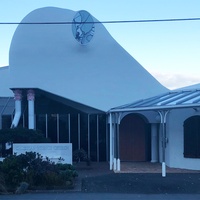
01. 1983 – First Church of Christ Scientist
285 Willis Street, Wellington
Athfield Architects
Julia Gatley, in her Athfield tome, says the Christian Scientists “sought ‘an identifiable place of worship’, but without traditional religious symbolism of ritual. They got both things in droves. ‘Is it a whale? Is it a turtle, a praying mantis or perhaps a prehistoric monster rearing its “head” over Willis St., Wellington?’, asked a journalist in 1983 when the building was completed.” The wonky form is complimented by a rigorous plan — an octagonal auditorium and orthogonal support spaces are ordered by a path running from the street entry to an enclosed garden at the rear. The building has recently sold and its future is uncertain. Winner of an NZIA National Award in 1984.
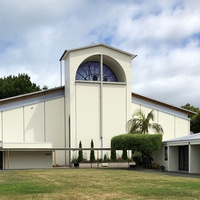
02. 1984 – St Patrick’s Church
4 Munroe Street, Napier
Warren and Mahoney
One of the high points of Kiwi pomo, this project replaced a timber Gothic church that survived the 1931 quake only to burn down in 1981. Sitting calmly on the edge of the CBD, the building presents a relatively blank face to the surrounding streets but is approached across an ātea-like forecourt, the composition all pomo arches, barrel vaults, and classical proportions. Within, a semicircular geometry focused on the altar is put to full effect — the disciplined composition of concrete columns and walls, timber trusses, and clerestory light calling back to Warren and Mahoney’s best high modern work. See Architecture NZ July/August 1984.
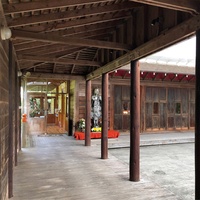
03. 1994 – Bodhinyanarama Monastery
17 Rakau Grove, Stokes Valley, Lower Hutt
Hugh Tennant: Architect
Tucked into the bush at the edge of the suburbs, the site is infused with birdsong and the trickling of an adjacent stream. Unlike much of New Zealand’s non-Christian religious architecture, often limited to makeshift facilities, this project reworks two key Buddhist building types: the meditation hall and cloister, fusing aspects of both Asian and Kiwi timber traditions. In a concession to the Wellington climate – Lower Hutt is not Laos — the cloister now has a fabric roof. Winner of an NZIA National Award in 1994. See Architecture NZ May/June 1994. The site was master-planned to be realised in stages as funds allowed, and in 2012 Tennent Brown added an elegant reception building.
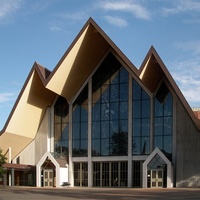
04. 1995 – Holy Trinity Cathedral
Parnell Road, Parnell, Auckland
Richard Toy
The old European cathedrals took centuries to erect, the various sections often reflecting evolving architectural styles. Despite our relatively short Christian history, several Kiwi cathedrals have followed this pattern, including Anglican HQs in Dunedin and Nelson. In Auckland, Holy Trinity took less than 40 years but demonstrates the huge shifts in local architecture. Charles Towle’s 1935 neo-Gothic design, intended to replace the ‘temporary’ St Mary’s Church, was delayed by WWII, with only a portion being constructed between 1958 and 1973. Toy’s wide-span nave brought the building to completion in 1995. Later, as part of a 2017 refurbishment, Fearon Hay added its Insta-friendly Bishop Selwyn Chapel.
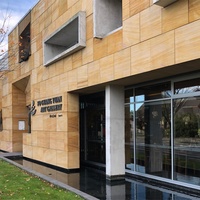
05. 2007 – Buddhist Community Centre
2 Harakeke Street, Riccarton, Christchurch
Warren and Mahoney
Standing on a busy suburban road, this building presents a striking frontage – a hefty wall of Indian sandstone adorned with sculpture, the composition intended to recall Buddhism’s original manifestations in sandstone caves. Within, the palette is restrained neo-modernism, the building providing a range of facilities intended to both serve the Buddhist community and reach out beyond with a meditation hall, an art gallery, a vegetarian restaurant, offices and meeting rooms. Reflecting pools and a garden courtyard add to a sense of calm. Winner of an NZIA National Award in 2007. See Architecture NZ May/June 2007.
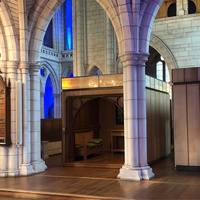
06. 2012 – St Thomas’ Chapel at St Matthew-in-the-City
134 Hobson Street, Auckland
Salmond Reed Architects
Salmond Reed had long been involved in conservation and refurbishment work for this large, historic inner-city church, completed to Frank Loughborough Pearson’s design in 1904. This project inserted two ‘cabinets’ into the interior to address two specific needs: one cabinet houses a restored historic chapel originating from a 19th century ship; another cabinet houses a kitchen and accessible toilet, intended to service the surrounding space during its frequent use for events. Winner of numerous awards, including an NZIA National Award in 2012. See Architecture NZ July/August 2011.
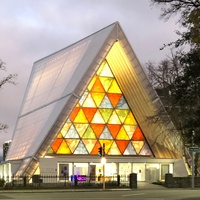
07. 2013 – Cardboard Cathedral
234 Hereford Street, Christchurch
Shigeru Ban Architects with Warren and Mahoney
Famed ‘paper architect’ Shigeru Ban brought his signature cardboard tubes to the Christchurch quake rebuild. Originally conceived as temporary, the building will become a permanent parish church when the Christ Church Cathedral congregation returns to its re-built facilities. However, the simple palette — cardboard tubes, concrete, polycarbonate, shipping containers — was intended to keep front of mind that the project was a response to an emergency. The project was one of the first major buildings completed in Christchurch in the quake rebuild; it became a symbol of the city and its recovery. Still the only building in New Zealand by a Pritzker Prize winner. See Architecture NZ May/June 2013.
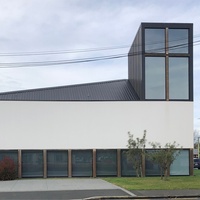
08. 2017 – Chapel Street Centre
68 Harewood Road, Papanui, Christchurch
Dalman Architects
Another post-quake rebuild, this project was created to serve a suburban Methodist parish. Externally, a sculptural roof line is an update to the urban role of the spire while, internally, it brings dramatic light into the worship space. Programmatically, the project exemplifies contemporary parish architecture — a generous multi-purpose foyer connects the worship space and the suite of offices, meeting rooms, and other parish facilities. Winner of an NZIA National Award in 2017. See Architecture NZ March/April 2017. A few minutes’ drive away, at 853 Colombo Street, Dalman Architects completed a church, office, and sports complex for the Salvation Army in 2017.
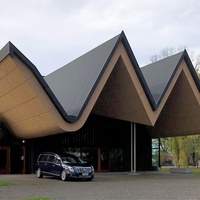
09. 2017 – St Andrew’s College Centennial Chapel
347 Papanui Road, Christchurch
Architectus
Built to replace a school chapel lost in the Christchurch quake sequence, this project received the NZIA’s John Scott Award for Public Architecture in 2018. The jury stated: “The new chapel at St Andrew’s College overtly references its much-loved, quake-ruined predecessor through the incorporation of numerous salvaged heritage elements. This integration is achieved with a rare appropriateness and thoroughgoing integrity. The new chapel is accessible to the wider community as well as the college of which it is the heart and is exemplary… in the way in which it responds to the needs of the present while acknowledging the legacy of the past.”

10. 2017 – Lesieli Tonga Auditorium
143 Favona Road, Favona, Auckland
Bull O’Sullivan Architecture
This is not the worship space of the Free Wesleyan Church (designed by Wayne Mitchell, 1998) but the huge social hall standing alongside it. Built to serve the congregation, as well as the wider Tongan community, it provides a hardwearing, multi-purpose venue for a broad range of festivities and rituals. It was built by the community and supporters from the Islands, and the architects have made just a few careful moves: most notably the dramatic blue ceiling of frangipani flowers. It is currently vamping as a colourful airport terminal in Air New Zealand television ads. Winner of an NZIA National Award in 2017. See Architecture NZ September/October 2017.

11. 2018 – Oxford Terrace Baptist Church
288 Oxford Terrace, Christchurch
Andrew Barrie Lab
This congregation used the opportunity presented by the quakes to re-imagine the ways in which an inner-city church might operate. Rather than a ‘parish centre’, the approach called back the spiritual and social model of the medieval monastery: designed to nurture the flock while serving the surrounding community. The first stage includes facilities for worship, the parish hall and offices, office space for several social services agencies, and a public café. A second stage, including housing and more social service agency space, is now under construction. Winner of an NZIA Canterbury Award in 2019. See Architecture NZ January/February 2020.
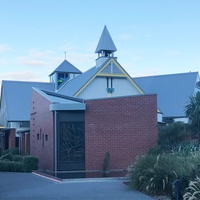
12. 2019 – Chapel for Mother Aubert
2 Rhine Street, Island Bay, Wellington
Tennant Brown
Aubert was a beloved Catholic sister, active from the 1860s. She founded hospitals, a religious order and a church, served the Māori people, and wrote books in French, English, and Māori. Her funeral in 1926 was reportedly the largest ever for a woman in New Zealand and moves to canonise her as a saint began in 2010. The complex is headquarters to the Sisters of Compassion, the order Aubert founded. Used as a religious retreat centre, it also includes Tennent Brown’s 2016 Sisters’ Housing. The suitably modest chapel — an extension to a large existing worship space — includes Aubert’s sarcophagus. Recipient of an NZIA Wellington Award in 2019.
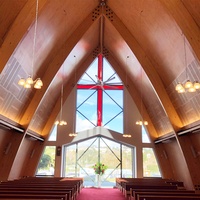
13. 2020 – Tuvalu Christian Church
15 Aetna Place, Henderson, Auckland
South Pacific Architecture
This church was built to serve the Tuvaluan community and its planning follows the contemporary pattern — a central entry gives access to the worship space as well as offices, meeting rooms and the larger volume of an existing hall. The charm of the project is in the way modest means have been used to maximum effect. Standing in a light industrial area, the building has adopted the low-cost materials of its neighbours while the dramatic form marks its significance. Internally, the timber-lined worship space is intimate, warm, and replete with cultural references. Winner of an NZIA Auckland Award in 2021. See Architecture NZ March/April 2021.
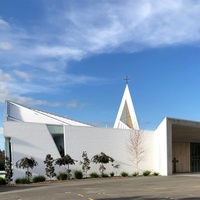
14. 2020 – Chapel of St Peter
23 Mountain Road, Grafton, Auckland
Stevens Lawson Architects
Within a relatively simple fish-shaped footprint, heights in this school chapel have been manipulated to create a dramatic exterior that integrates a spire and a window formed into the upside-down cross of St Peter — a motif also used by Architectus across the campus in their 2001 Technology Building. Internally, the same manipulations deliver a subtle composition of light and space: a compressed entry enhances the expansive space above the altar; a restrained pallet of materials induces calm; and intimate support spaces are tucked behind walls. Recipient of an NZIA National Award in 2020. See Architecture NZ September/October 2020.
Other addresses
Massey University Turitea Campus
University Avenue, Palmerston North
Frederick Burwell; John McCulloch, Architect.
Early buildings include the Refectory (1930) and Main Building (1931) by American- born Roy Lippincott, best known as the architect of the ClockTower building at the University of Auckland (1921–1926).
Rangiātea (2003)
33 Te Rauparaha Street, Ōtaki
Royal Associates and Rewi Thompson
Siting this building in both the Māori and Pākehā worlds, Bill McKay wrote: “Rangiātea combines elements of the spiritual buildings of both cultures: it is cloaked in weatherboards typical of churches but, at the heart of the building, the great central pou (posts) typical of the meeting house support the tāhuhu (ridge beam) spine.” Completed in 1851 under the direction of Chief Te Rauparaha and missionary Octavius Hadfield, the original building was destroyed by arson in 1995 but meticulously rebuilt.
Holy Trinity Anglican (2003)
215 Devonport Road, Tauranga
Architecture Page Henderson
St Joseph’s Church (2004)
152 Brougham Street, Mount Victoria, Wellington
Studio Pacific Architecture
The demands of a parish church are arranged within a disciplined composition of abstract forms.
Holy Family Catholic Church (2011)
154 Aubrey Road, Wanaka
Sarah Scott Architects
St Brigid’s Catholic Church (2011)
4 Monmouth Street, Feilding
Void Architecture Research Urbanism
St John’s Methodist Church (2017)
20 Wellington Street, Hamilton
MOAA Architects
SOURCES
The ‘go to’ book on spiritual buildings in New Zealand is Bill McKay’s hefty Worship: A History of New Zealand Church Design (Auckland: Godwit, 2015). It includes our most iconic churches, as well as lesser-known gems that give a fuller picture of the role these buildings play in the spiritual and social lives of their communities. Several of the projects are included in monographs. For First Church of Christ Scientist, see Julia Gatley’s Athfield Architects (Auckland: Auckland University Press, 2012). For St Patrick’s, see Warren and Mahoney Architects 1958–1989 (Christchurch; Warren and Mahoney, 1989). St Andrew’s has had a lovely little book produced about it: John Walsh, St Andrew’s College Centennial Chapel Te Kāreti o Hāto Ānaru Te Kotahi Rau Tau o te Whare Karakia (Auckland: Architectus Bowes Clifford Thomson, 2019). The Cardboard Cathedral also has a book: Andrew Barrie, Shigeru Ban: Cardboard Cathedral (Auckland: Auckland University Press, 2014).

The itinerary series is supported by Dulux Colours of New Zealand. Dulux Colour Specialist Davina Harper has selected a Colours of New Zealand palette based on this itinerary. See the full range and order colour samples here.

